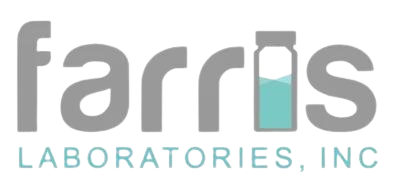Understanding the quality assurance in ISO 14644-1:2015 designation
Professional standards within the medical industry describe what competency is. This holds true across the industry, from the standards of cleanliness in hospitals to specialized fields of medicine. If these standards did not exist, or exist at a high bar, the quality of care that patients could expect from their trusted medical experts would be wildly different across the country, and near-impossible to coordinate across different individual medical practitioners.
The uniformity of medical standards are key for their guidance of clinical practice and ability to constantly self-evaluate for clinical proficiency and safety. Professional standards guarantee accountability of one’s own practice and others’. It can be used as a comparison tool to measure if a member of the medical community has developed unsafe or unethical practices by not adhering to widely accepted guidelines.
In this way, standards exist as a singular unified vision that all those who work in the medical field are guided by.
What Is the ISO 14644-1?
As of November 29th, 2001, the Federal Standard 209E, established by the General Services Administration of the US Department of Commerce, has been replaced with ISO 14644-1. As ISO 14644-1 has been reviewed and confirmed as recently as 2021, it will likely remain the standard that classifies cleanrooms (defined below) for the foreseeable future.
While Federal Standard 209E is still widely used, it is not recognized by the General Services Administration, and so ISO 14644-1 remains a more viable (and recognized) standard to stick to in the long term.
The ISO 14644-1 specifies the classification of air cleanliness in terms of cleanrooms and clean zones, as well as separate devices that are defined in ISO 14644-7.
Only particle populations having cumulative distributions based on threshold (lower limit) particle sizes ranging from 0,1 µm to 5 µm are considered for classification purposes. ISO 14644-1 standards do not provide for classification of particle populations that are outside the specified lower threshold particle-size range. Concentrations of ultrafine particles (particles smaller than 0,1 µm) are addressed in a separate standard.
ISO 14644-1 standards cannot be used to characterize the physical, chemical, radiological, viable or other nature of airborne particles.
In case you are curious as to the difference between the old and new standard, it is that, generally speaking, the difference between Federal Standard 209E and ISO 14644-1 is that the federal standards are measured in cubic feet (AKA: freedom units) and the ISO standards are measured in cubic meters (which is more adopted globally).
What Is a Cleanroom, According to the ISO Standard 14644?
A cleanroom, according to the ISO Standard 14644, is a “room within which the number concentration of airborne particles is controlled and classified, and which is designed, constructed and operated in a manner to control the introduction, generation and retention of particles inside the room”.
In other words, a cleanroom is an enclosed room that has equipment which controls the amount of particulate airborne matter with the use of air pressure and filters.
A cleanroom must have a high rate of air changes to scrub the room of air particles. Class One cleanrooms, the “highest” class available, are the cleanest, and in order to achieve a “higher” Class, you need to have a higher air change rate in order to qualify. For example, a Class Five room can have an air change rate of 400 to 600 times per hour while a Class Seven room can change at 50 to 60 changes per hour.
Once the room is completed, most specifications call for testing and certification before it can become operational. Testing is usually conducted by an independent testing agency using the ISO Standards.
ISO Standard 14644-1 defines an “operational” cleanroom as an “agreed condition where the cleanroom… is functioning in the specified manner, with equipment operating and with the specified number of personnel present”.
What Are Viable Particulates?
Viable Particulates are:
- Monitored by settled plates or air sampler (see explanation below)
- Particles that contain one or more living organisms
- Consist of living organisms
- 0.2 - 30μm
- Able to germinate
- Examples include fungi, bacteria, viruses, spores, etc.
- May affect sterility of the pharmaceutical (or similar) products
Settled plates measure the microorganisms that settle on a particular surface area over a given period of time from the air. By counting the number of colonies of microorganisms that have formed over the surface area, the density of microorganisms within the cleanroom environment can be calculated.
Air samplers collect microorganisms in the air and delivers them onto a plate. The microorganism count is measured by the number of colony-forming units per cubic meter (cfu/m3).
What are non-viable particulate pollutants?
Non-viable particulate pollutants are:
- Particles that do not contain living organisms
- No living organisms
- 0.5 - 5.0μm
- Monitored using a particle counter
- Act as a transporting agent for the viable particles
- Examples include dust, mist, fogs, fumes, and tiny wastes
The monitoring of non-viable particles is done with particle counters, which are unable to distinguish between viable and non-viable particulates. They are more advanced than air samplers, however.
What is non-viable Contamination?
Non-viable contaminants are non-viable particles that enter the cleanroom through avenues such as metal, rust, stray dirt or dust, pollen, fibers, cloth, unwanted chemicals (such as from makeup), which bring in viable contaminants.
Non-viable contaminants are usually a result of employee movement, cleanroom or employee garb, and/or the movement of products.
What Are Viable Contaminants?
Viable contaminants are viable particles that enter the cleanroom which threaten the sterility of the cleanroom and threaten to degrade, damage, or otherwise tamper with the end-product being produced in the cleanroom.
Since medical equipment or medicines usually needs to be sterile to be considered safe to use, an instance of contamination can prove to be a disaster, or even a health risk to those the product is trying to save.




